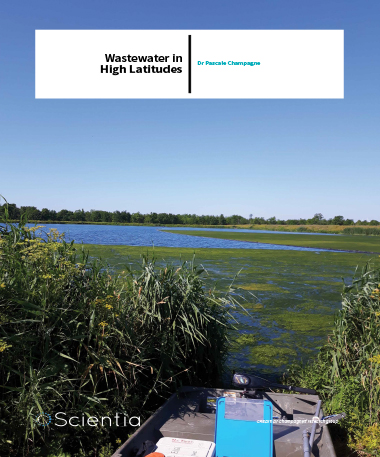Dr Pascale Champagne – Wastewater In High Latitudes
Dr Pascale Champagne and her environmental engineering group at Queen’s University are taking a close look at wastewater treatment ponds across Canada, where climate zones range from temperate to high-arctic. By investigating the role of algae and microbes in these ponds and how they respond to temperature and sunlight, Dr Champagne hopes they can eco-engineer a modern model for treating wastewater in Canadian climates.
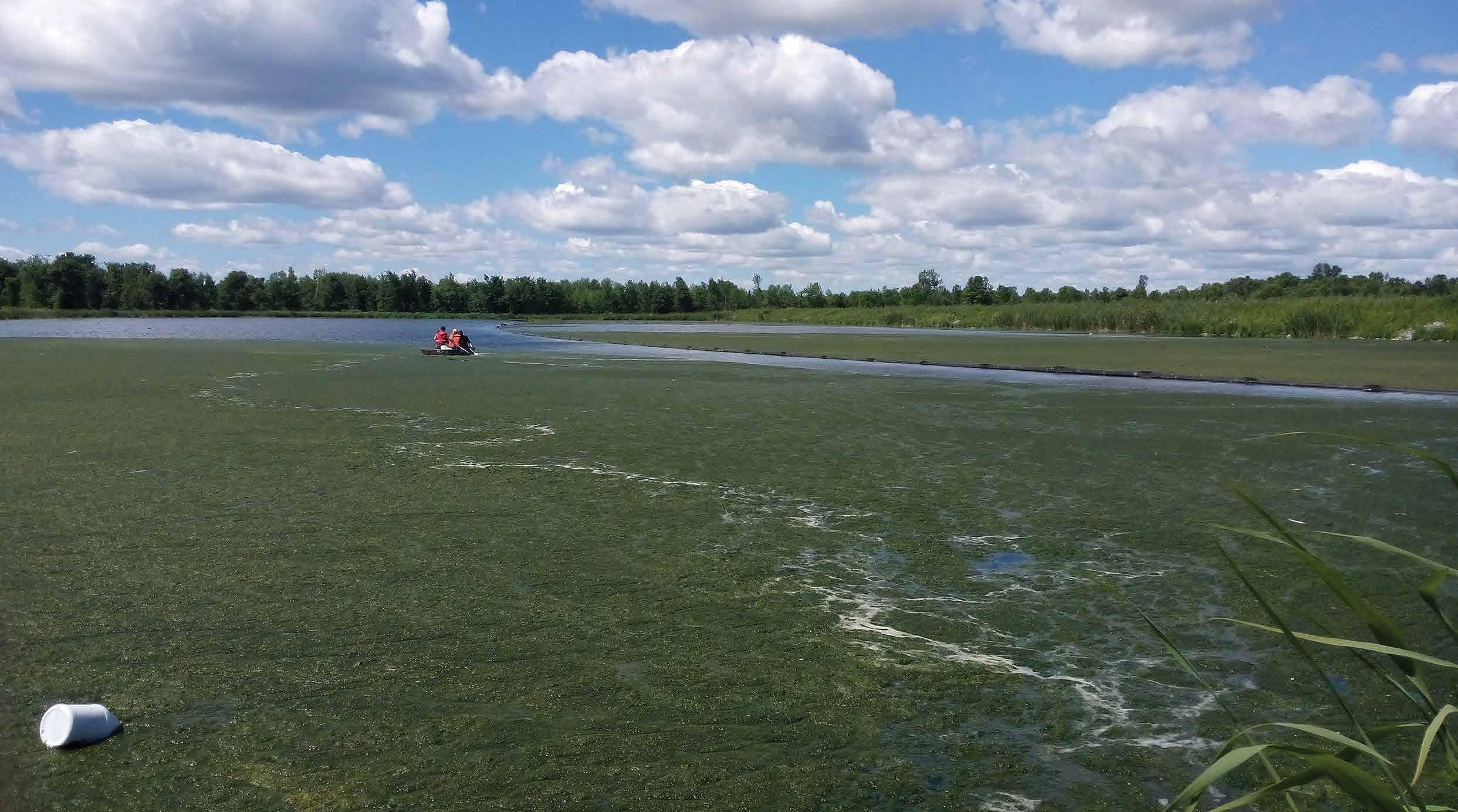
The Problem up North
In an effort to reduce the 150 billion litres of effluent released into the environment every year, Canada is adopting tough measures. In 2012, the agency Environment and Climate Change Canada passed strict regulations that mean many operators will need to improve their current systems to treat wastewater. Some have estimated that these upgrades could require a staggering investment upwards of $20 billion.
Small municipalities may bear the brunt of these costly upgrades. More than 3,500 wastewater treatment facilities are in operation throughout Canada today. Many of these use wastewater treatment ponds or stabilisation ponds, that are relatively low cost and useful for small, remote or rural towns in Canada. In the province of Ontario alone, there are 137 such lagoon systems.
Typically, wastewater treatment ponds work by first reducing the amount of total solids, which settle out and are processed by anaerobic bacteria in the sediment at the bottom of the pond. After the solids load is reduced, algae, aerobic microbes and sunlight kick in to remove organics, nutrients and pollutants, as well as disinfect the water. Until now, little research has been done to understand how these ponds work in extreme climates like those found in higher latitudes.
One thing seems certain at higher latitudes: the performance of wastewater ponds can become unreliable depending on the time of year. In the summer months, long days with increased sunlight and temperatures can cause algae growth to explode, leading to detrimental water quality in the ponds. High algae growth can cause pH levels to rise and can reduce the amount of sunlight and ultraviolet radiation necessary to disinfect water. However, the high pH levels can also contribute to disinfection.
On the other hand, wintertime at higher latitudes brings much shorter days and colder temperatures than those experienced in temperate zones. Freezing causes any biological activity in the ponds to slow or cease, and algae hardly grows at all. This means that wastewater treatment ponds effectively stop working for several months of the year. However, the extended photoperiods at higher latitudes can also contribute 24 hours of treatment in algal ponds, which could be beneficial.
The complexity of these systems can lead to confounding results and potentially affect the effluent from these systems, which can detrimentally impact aquatic environments downstream. Hence, a clearer understanding of the synergistic responses in these systems is critically needed. Understanding how waste stabilisation ponds work in both summer and winter at higher latitudes is a chief aim of Dr Champagne’s research team, especially in light of the 2012 wastewater regulations. Her team’s ongoing projects in Loyalist Township, located in temperate Ontario, and in the territory of Nunavut, located in the far Arctic north, make for appropriate case studies.
‘The results we have found thus far have been very promising in terms of making wastewater treatment and the release of treatment effluents to receiving environment more achievable particularly in small, remote and rural communities, as well as developing countries.’
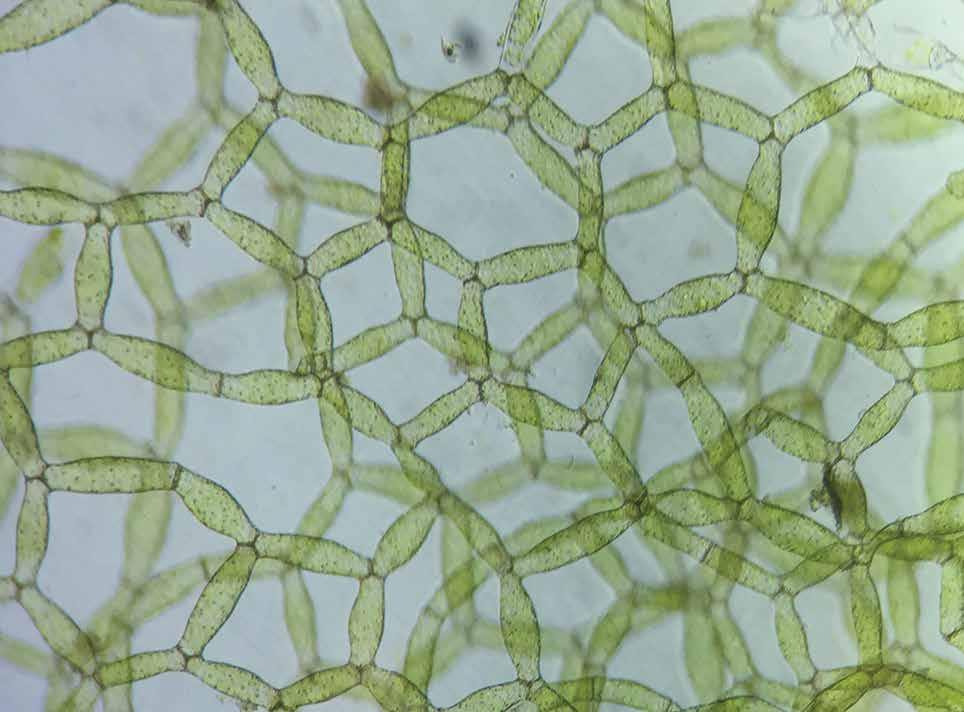
CREDIT: Dr Champagne’s research group
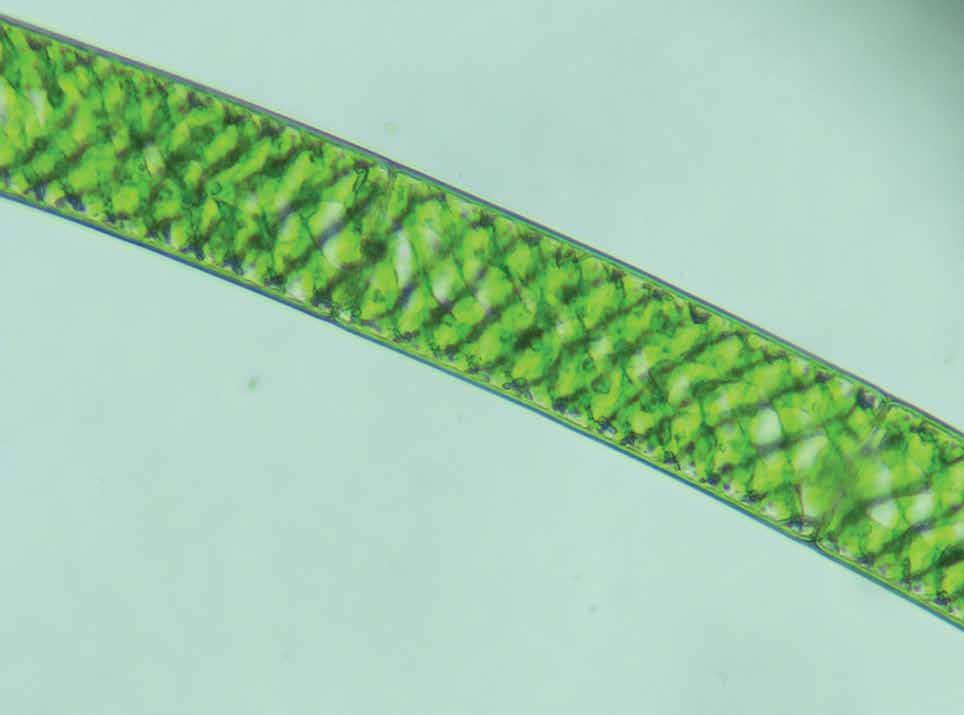
CREDIT: Dr Champagne’s research group
The Loyalist Project – Wastewater in a Temperate Zone
The Township of Loyalist is located in a temperate climate zone in central eastern Ontario near Lake Ontario and Canada’s southern international border. There, the Amherstview Wastewater Treatment Plant uses effluent polishing and storage lagoons to treat their effluent before it is discharged back into the environment. Eventually, Amherstview effluent drains into Lake Ontario, which is a source of drinking water for many municipalities.
Like many of its counterpart lagoon systems, algal blooms grow in the Amherstview ponds during times of the year when temperatures and sunlight increase. The conditions caused by excessive algae growth can lead to high pH events that can exceed acceptable and regulatory levels.
To tackle the problem, the Loyalist Township’s Utilities Division has partnered with Dr Champagne’s research group at Queen’s University to improve upon their existing wastewater treatment facility. They’ve decided to incorporate an engineered constructed wetland, one of the planet’s most effective filters, into Amherstview’s facility. Wetlands, the socalled ‘kidneys of the natural world’, are known to be effective in controlling storm water flow, as well as reducing pollutants in effluent discharges. ‘This will be an exciting opportunity for our group to research, since the issues being addressed are very important to small, remote and rural communities across Canada,’ Dr Champagne tells us.
Her team proposed that they convert one of three effluent polishing and storage lagoons in Amherstview’s treatment system to an engineered constructed wetland. The idea was that by adding a manmade wetland to the final stage of wastewater treatment they could effectively attenuate, or ‘polish’, the effluent being returned to the environment.
Before eco-engineering a wetland system, however, the researchers needed to characterise existing conditions at Amherstview. They also had to investigate the feasibility and effectiveness of wetlands to treat its elevated pH levels along with any other water quality issues that could inadvertently arise. So for three years they conducted several preliminary studies that included collecting chemical, physical and biological data on the existing effluent polishing and storage lagoons that were experiencing high algae growth. They also investigated the interactions of these parameters to help identify the conditions that create excessive algae growth and high pH. Peat and topsoil were identified as the two best substrates to allow plant growth and effective pH attenuation from the discharge at Amherstview.
Using these preliminary results, the Queen’s University-Loyalist partnership eco-engineered a pilot-scale constructed wetland, which was finally constructed in the fall of 2016. The area of the wetland is approximately 25,500 m2 in size and consists of twelve 80 x 25 m cells up to 1 m in depth. As planned, it is located downstream from the two remaining effluent polishing and storage lagoons that are similar in size. Water from these ponds will flow into and over the treatment cells, which harbour native species such as common cattails.
For the next two years, the team will closely monitor performance of the constructed wetland and how well it polishes the effluent coming from the previous ponds. They plan to test different plant species and densities, as well as flow and hydraulic conditions to assess their role in treatment performance and in improving water quality.
An important design feature of their project is that they’ve only selected native species for planting in the wetlands because they are adapted to the unique Canadian climate and are resistant to native diseases. The team also wants to avoid introducing invasive species into the ecosystem.
After the two-year monitoring period, the Amherstview eco-engineered treatment facility will hopefully become an important research and demonstration site for other wastewater treatment scientists and operators. The researchers ultimately want to work towards a treatment system design that reduces high pH and algal load and demonstrates resilience and ease of maintenance.
The project will aid efforts to polish wastewater at existing treatment facilities rather than construct costly new ones. If small wastewater treatment operators could simply add constructed wetlands to achieve desired effluent levels, they could well avoid bearing the brunt of more punishing upgrade costs. Furthermore, the wetlands also could add invaluable habitat for animals, act as wildlife corridors and increase outdoor areas for the public to enjoy.
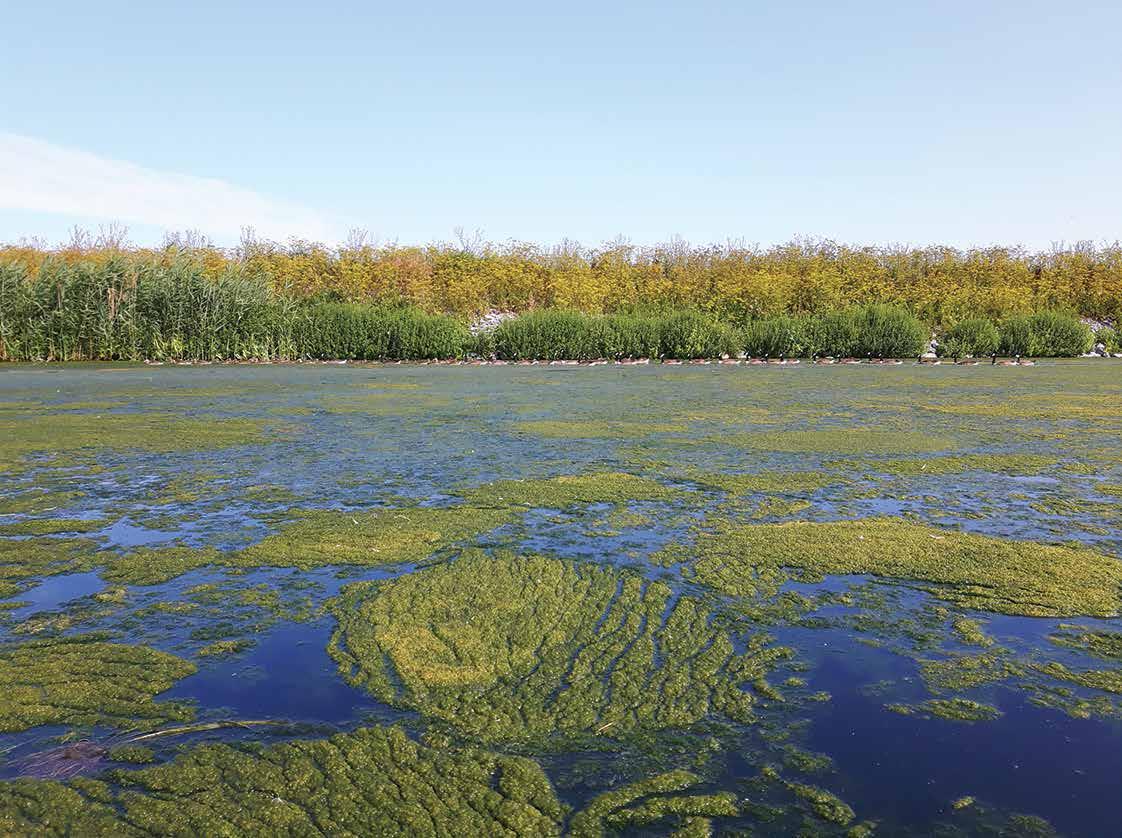
CREDIT: Dr Champagne’s research group
Tactics in the Arctic – the Nunavut Project
Over 2,000 kilometres to the north of Loyalist and above the 54th parallel, lies Nunavut, a sparsely populated territory of Canada’s Far North. In this part of the world, an extremely cold climate and permafrost, along with small and isolated populations have necessarily required that wastewater treatment be kept fairly simple and easy to operate. To treat their wastewater, most of the 25 communities in Nunavut use passive treatment technology such as waste stabilisation ponds.
The region is so far north and cold that that fresh water and wastewater cannot be piped to their destinations because of permafrost, and rather are hauled using trucks. Trucks pick up wastewater from individual homes several times per week and deliver it to a central retention pond system that can hold up to a year in volume of wastewater. The wastewater in the ponds remains frozen and stored for 9 months, from October to June. It is then decanted after melting at the end of the treatment period during the warmer months (July to September).
Not surprisingly due to their remote locations, scientists know little of how well these ponds in the Far North are performing. Pond effluent, however, will eventually be subject to the 2012 regulations for municipal wastewater treatment systems implemented by Environment Canada. Currently, the government has extended a grace period to these communities so that scientists and environmental engineers like Dr Champagne can start to better understand their processes and help improve their performance.
She and her colleagues, Rob Jamieson from Dalhousie University and Geoff Hall from Queen’s University, characterised several waste stabilisation ponds in Nunavut from 2011 to 2014. During these four years, they measured water quality parameters such as temperature, pH, conductivity, dissolved oxygen, organics, solids and pathogens. They also sampled and tested wastewater at the beginning and end of the treatment cycle. Among other constraints of the Arctic, they found that the period of time during which algae could grow was short, only about 60 days. If pond conditions were left as they were, they would have to hold wastewater for at least three summer seasons instead of one before effluent was properly treated to regulation levels and released back into the environment.
This study identified the problem as low biological activity and weak algae growth, critical factors in treating wastewater in these Far North ponds. To address this issue, the engineers recommend tweaking the design of current wastewater systems, which often have only one pond. For example, by adding another deeper pond as a first stage, they can remove sediments and allow for better algae growth in a secondary pond. Also, by adding filters known as geotextiles into the system, to remove solids and offer additional biological treatment prior to discharge, they can further treat the effluent before it is released into the environment.
Another tactic in the Arctic is to maximise the disinfecting powers of sunlight in the ponds. In a study conducted by Lei Liu, one of Dr Champagne’s graduate students, the researchers also concluded that adding another pond to current single-pond systems would help the process. That way, solids and organic material could settle into a primary deeper pond. In the secondary pond, sunlight could then better penetrate and naturally disinfect the effluent.
Cold climates can diminish the effectiveness of wastewater ponds in treating effluent, but the team’s research indicates that they can be modified and adapted to work effectively despite limitations.
What the Future Might Hold
Dr Champagne believes that the team’s research could be helpful in other applications, and points to algae as an example. Along with the benefits of using it instead of expensive chemicals in wastewater treatment, algae produced in stabilisation ponds could be utilised by cement companies as a biofuel to produce energy. In turn, these companies produce carbon dioxide, which could be used to promote algal growth in the ponds.
‘All of this research interconnects to close the loop making waste products as valuable as possible, and it will hopefully make a lasting positive change on the way waste is currently perceived and employed in society,’ explains Dr Champagne. Her team’s work will make a positive impact towards global sustainability, and may go a long way in helping communities tackle the issue of treating wastewater in small, remote and rural communities, not only in Canada but also in developing nations.
Meet the researcher

Dr Pascale Champagne
Professor, Canada Research Chair in Bioresources Engineering
Queen’s University
Kingston, Canada
Dr Pascale Champagne received her PhD in Environmental Engineering in 2001 and MASc in Civil Engineering in 1996, both from Carleton University, Canada. She is currently a Professor at Queen’s University in Kingston, Ontario, where she is a member of the Faculty of Engineering and Applied Science Engineering appointed to the Department of Civil Engineering and cross-appointned to the Department of Chemical Engineering. Her research focuses on developing alternate water and waste management technologies, in addition to environmentally sustainable solutions for managing bioresources. In 2014, Dr Champagne was inducted into the Royal Society of Canada’s College of New Scholars, Artists and Scientists, a program that recognises emerging Canadian intellects and scholars. Prior to that in 2012, she received the Canada Research Chair Tier II award in Bioresources Engineering at Queen’s University. Dr Champagne has authored or co-authored more than 100 peer-reviewed journal articles as well as numerous chapters in books related to bioengineering and biotechnology. She oversees the research of several graduate students and serves on the Water Research Centre at Queen’s University.
CONTACT
E: pascale.champagne@queensu.ca
T: (+1) 613 533 3053
W: http://my.civil.queensu.ca/Research/Environmental/Pascale- Champagne/#fndtn-research
KEY COLLABORATORS
Loyalist Township, Government of Nunavut
FUNDING
NSERC Collaborative Research and Development Program
Canada Research Chairs
Federation of Canadian Municipalities’ (FCM)
Green Municipal Fund (GMF)
Canadian Water Network
REFERENCES
M Jin, P Champagne and G Hall, Effects of Different Substrates in the Mitigation of Algae-induced High pH Wastewaters in Free Water Surface Wetland Systems Water Science and Technology, online publication September 9, 2016 (In Press). DOI: 10.2166/wst.2016.401
J Wallace, P Champagne and G Hall, Time Series Relationships Between Chlorophyll-a, Dissolved Oxygen and pH in Three Facultative Wastewater Stabilization Ponds Journal of Environmental Science: Water Research and Technology, 2016, 2, 1032–1040
J Wallace, P Champagne and G Hall, Multivariate statistical analysis of water chemistry conditions in three wastewater stabilization ponds with algae blooms and pH fluctuations, Water Research, 2016, 96, 155–165.
J Wallace, P Champagne and G Hall, Time series relationships between chlorophyll-a, dissolved oxygen, and pH in three facultative wastewater stabilization ponds, Environ. Sci.: Water Res. Technol., 2016, 2, 1032–1040.
J Wallace, P Champagne, G Hall, Z Yin and X Liu, Determination of Algae and Macrophyte Species Distribution in Three Wastewater Stabilization Ponds Using Metagenomics Analysis, Water 2015, 7, 3225–3242.
L Liu, G Hall and P Champagne, Effects of Environmental Factors on the Disinfection Performance of a Wastewater Stabilization Pond Operated in a Temperate Climate, Water, 2016, 8, 5.


